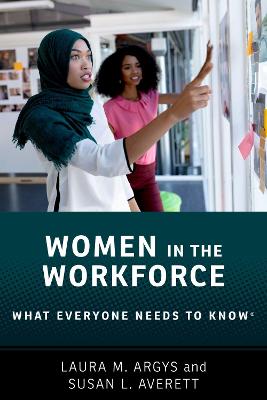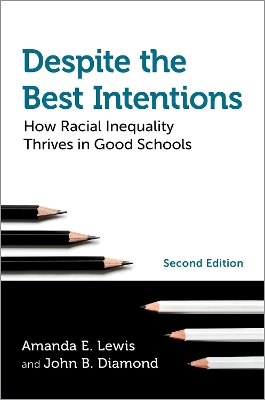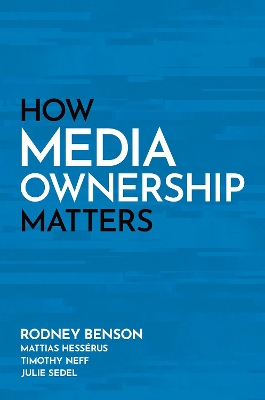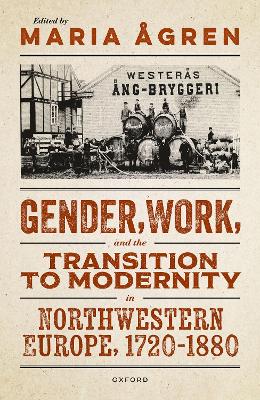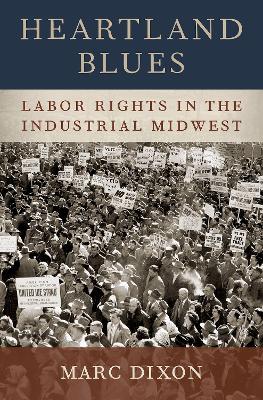Women in the Workforce
Women in the Workforce
What Everyone Needs to Know (R)
Averett, Susan L.; Argys, Laura M.
Oxford University Press Inc
06/2022
256
Mole
Inglês
9780190093389
15 a 20 dias
256
Descrição não disponível.
Preface
Introduction
Chapter 1. ARE WOMEN AN IMPORTANT PART OF THE ECONOMY?
a. How has women's attachment to the labor force changed over time?
b. How does labor force participation vary across countries?
c. Do women work as much as men?
d. Do women take jobs from men?
e. Does women's work count?
f. How much do women contribute to the economy?
g. How do recessions affect women?
h. Is women's work different in developing countries?
i. Do women influence spending decisions?
j. Is there a pink tax?
Chapter 2. IS THERE SUCH A THING AS WOMEN'S WORK?
a. How do economists view the evolution of gender roles?
b. When was it acceptable for women to work outside the home?
c. How did women progress from jobs to careers?
d. What jobs do women perform and how has that evolved over time?
e. How are gender differences in occupation related to women's family responsibilities?
f. Was WWII really a watershed for women's work lives?
g. How did birth control and abortion affect women's work and family trade-offs?
Chapter 3. HOW DO WOMEN BALANCE WORK AND FAMILY?
a. What is the gender division of labor within a household?
b. How do couples decide who does what?
c. Is the division of labor different for same-sex couples?
d. How did technology change the work women do?
e. How is the timing of births related to a woman's career?
f. Can women successfully combine breastfeeding and work?
g. How does women's work behavior reflect family responsibilities?
h. When does the caring end? Women in the sandwich generation.
i. How do employers and the government help with work-life balance?
Chapter 4. HOW DO MEN AND WOMEN INTERACT IN THE WORKPLACE?
a. Have women made inroads in business leadership?
b. Why are women underrepresented in the top business echelons?
c. Are there differences in how women and men network and does it matter for career success?
d. Does working for a female manager enhance women's careers?
e. Do women need mentors and if so, does it matter who they are?
f. How does having female representation on boards of directors help women?
g. Why aren't women always heard in the workplace?
h. Is there a gender gap in self-promotion? Does it matter?
i. How does sexual harassment (and the #MeToo movement) affect women in the workplace?
Chapter 5. WHY ARE WAGES HIGHER ON MARS THAN ON VENUS?
a. How are wages determined?
b. How do we measure the gender pay gap?
c. How big is the gender pay gap? Does it vary for women of color? For immigrants? By sexual orientation?
e. How does the pay gap vary across countries?
f. What can we measure that might explain the reasons for gender pay differences?
g. What is left to explain the pay gap?
Chapter 6. DO WOMEN EARN LESS BECAUSE MEN RULE THE WORLD?
a. What exactly is labor market discrimination?
b. What causes pay discrimination?
c. Why is it so hard to measure discrimination?
d. How do we measure discrimination?
Chapter 7. CAN'T THE GOVERNMENT JUST FIX THE PAY GAP?
a. What are the consequences of discrimination for the economy?
b. How can we justify the existence of anti-discrimination laws?
c. What laws protect women from discrimination?
d. Who enforces these laws and how are they enforced?
e. How effective are these laws?
f. What might the future hold with respect to closing the gender pay gap?
Chapter 8. HOW DO WOMEN FARE IN RETIREMENT?
a. How do people decide when to retire?
b. How long is retirement for men and women?
c. Where does retirement income come from?
d. How much income do people have when they retire? How does this vary by gender and race/ethnicity?
e. Are women destined to be poor as they age?
f. How do single women fare later in life?
g. What options have been suggested to increase retirement security for women?
Introduction
Chapter 1. ARE WOMEN AN IMPORTANT PART OF THE ECONOMY?
a. How has women's attachment to the labor force changed over time?
b. How does labor force participation vary across countries?
c. Do women work as much as men?
d. Do women take jobs from men?
e. Does women's work count?
f. How much do women contribute to the economy?
g. How do recessions affect women?
h. Is women's work different in developing countries?
i. Do women influence spending decisions?
j. Is there a pink tax?
Chapter 2. IS THERE SUCH A THING AS WOMEN'S WORK?
a. How do economists view the evolution of gender roles?
b. When was it acceptable for women to work outside the home?
c. How did women progress from jobs to careers?
d. What jobs do women perform and how has that evolved over time?
e. How are gender differences in occupation related to women's family responsibilities?
f. Was WWII really a watershed for women's work lives?
g. How did birth control and abortion affect women's work and family trade-offs?
Chapter 3. HOW DO WOMEN BALANCE WORK AND FAMILY?
a. What is the gender division of labor within a household?
b. How do couples decide who does what?
c. Is the division of labor different for same-sex couples?
d. How did technology change the work women do?
e. How is the timing of births related to a woman's career?
f. Can women successfully combine breastfeeding and work?
g. How does women's work behavior reflect family responsibilities?
h. When does the caring end? Women in the sandwich generation.
i. How do employers and the government help with work-life balance?
Chapter 4. HOW DO MEN AND WOMEN INTERACT IN THE WORKPLACE?
a. Have women made inroads in business leadership?
b. Why are women underrepresented in the top business echelons?
c. Are there differences in how women and men network and does it matter for career success?
d. Does working for a female manager enhance women's careers?
e. Do women need mentors and if so, does it matter who they are?
f. How does having female representation on boards of directors help women?
g. Why aren't women always heard in the workplace?
h. Is there a gender gap in self-promotion? Does it matter?
i. How does sexual harassment (and the #MeToo movement) affect women in the workplace?
Chapter 5. WHY ARE WAGES HIGHER ON MARS THAN ON VENUS?
a. How are wages determined?
b. How do we measure the gender pay gap?
c. How big is the gender pay gap? Does it vary for women of color? For immigrants? By sexual orientation?
e. How does the pay gap vary across countries?
f. What can we measure that might explain the reasons for gender pay differences?
g. What is left to explain the pay gap?
Chapter 6. DO WOMEN EARN LESS BECAUSE MEN RULE THE WORLD?
a. What exactly is labor market discrimination?
b. What causes pay discrimination?
c. Why is it so hard to measure discrimination?
d. How do we measure discrimination?
Chapter 7. CAN'T THE GOVERNMENT JUST FIX THE PAY GAP?
a. What are the consequences of discrimination for the economy?
b. How can we justify the existence of anti-discrimination laws?
c. What laws protect women from discrimination?
d. Who enforces these laws and how are they enforced?
e. How effective are these laws?
f. What might the future hold with respect to closing the gender pay gap?
Chapter 8. HOW DO WOMEN FARE IN RETIREMENT?
a. How do people decide when to retire?
b. How long is retirement for men and women?
c. Where does retirement income come from?
d. How much income do people have when they retire? How does this vary by gender and race/ethnicity?
e. Are women destined to be poor as they age?
f. How do single women fare later in life?
g. What options have been suggested to increase retirement security for women?
Este título pertence ao(s) assunto(s) indicados(s). Para ver outros títulos clique no assunto desejado.
Preface
Introduction
Chapter 1. ARE WOMEN AN IMPORTANT PART OF THE ECONOMY?
a. How has women's attachment to the labor force changed over time?
b. How does labor force participation vary across countries?
c. Do women work as much as men?
d. Do women take jobs from men?
e. Does women's work count?
f. How much do women contribute to the economy?
g. How do recessions affect women?
h. Is women's work different in developing countries?
i. Do women influence spending decisions?
j. Is there a pink tax?
Chapter 2. IS THERE SUCH A THING AS WOMEN'S WORK?
a. How do economists view the evolution of gender roles?
b. When was it acceptable for women to work outside the home?
c. How did women progress from jobs to careers?
d. What jobs do women perform and how has that evolved over time?
e. How are gender differences in occupation related to women's family responsibilities?
f. Was WWII really a watershed for women's work lives?
g. How did birth control and abortion affect women's work and family trade-offs?
Chapter 3. HOW DO WOMEN BALANCE WORK AND FAMILY?
a. What is the gender division of labor within a household?
b. How do couples decide who does what?
c. Is the division of labor different for same-sex couples?
d. How did technology change the work women do?
e. How is the timing of births related to a woman's career?
f. Can women successfully combine breastfeeding and work?
g. How does women's work behavior reflect family responsibilities?
h. When does the caring end? Women in the sandwich generation.
i. How do employers and the government help with work-life balance?
Chapter 4. HOW DO MEN AND WOMEN INTERACT IN THE WORKPLACE?
a. Have women made inroads in business leadership?
b. Why are women underrepresented in the top business echelons?
c. Are there differences in how women and men network and does it matter for career success?
d. Does working for a female manager enhance women's careers?
e. Do women need mentors and if so, does it matter who they are?
f. How does having female representation on boards of directors help women?
g. Why aren't women always heard in the workplace?
h. Is there a gender gap in self-promotion? Does it matter?
i. How does sexual harassment (and the #MeToo movement) affect women in the workplace?
Chapter 5. WHY ARE WAGES HIGHER ON MARS THAN ON VENUS?
a. How are wages determined?
b. How do we measure the gender pay gap?
c. How big is the gender pay gap? Does it vary for women of color? For immigrants? By sexual orientation?
e. How does the pay gap vary across countries?
f. What can we measure that might explain the reasons for gender pay differences?
g. What is left to explain the pay gap?
Chapter 6. DO WOMEN EARN LESS BECAUSE MEN RULE THE WORLD?
a. What exactly is labor market discrimination?
b. What causes pay discrimination?
c. Why is it so hard to measure discrimination?
d. How do we measure discrimination?
Chapter 7. CAN'T THE GOVERNMENT JUST FIX THE PAY GAP?
a. What are the consequences of discrimination for the economy?
b. How can we justify the existence of anti-discrimination laws?
c. What laws protect women from discrimination?
d. Who enforces these laws and how are they enforced?
e. How effective are these laws?
f. What might the future hold with respect to closing the gender pay gap?
Chapter 8. HOW DO WOMEN FARE IN RETIREMENT?
a. How do people decide when to retire?
b. How long is retirement for men and women?
c. Where does retirement income come from?
d. How much income do people have when they retire? How does this vary by gender and race/ethnicity?
e. Are women destined to be poor as they age?
f. How do single women fare later in life?
g. What options have been suggested to increase retirement security for women?
Introduction
Chapter 1. ARE WOMEN AN IMPORTANT PART OF THE ECONOMY?
a. How has women's attachment to the labor force changed over time?
b. How does labor force participation vary across countries?
c. Do women work as much as men?
d. Do women take jobs from men?
e. Does women's work count?
f. How much do women contribute to the economy?
g. How do recessions affect women?
h. Is women's work different in developing countries?
i. Do women influence spending decisions?
j. Is there a pink tax?
Chapter 2. IS THERE SUCH A THING AS WOMEN'S WORK?
a. How do economists view the evolution of gender roles?
b. When was it acceptable for women to work outside the home?
c. How did women progress from jobs to careers?
d. What jobs do women perform and how has that evolved over time?
e. How are gender differences in occupation related to women's family responsibilities?
f. Was WWII really a watershed for women's work lives?
g. How did birth control and abortion affect women's work and family trade-offs?
Chapter 3. HOW DO WOMEN BALANCE WORK AND FAMILY?
a. What is the gender division of labor within a household?
b. How do couples decide who does what?
c. Is the division of labor different for same-sex couples?
d. How did technology change the work women do?
e. How is the timing of births related to a woman's career?
f. Can women successfully combine breastfeeding and work?
g. How does women's work behavior reflect family responsibilities?
h. When does the caring end? Women in the sandwich generation.
i. How do employers and the government help with work-life balance?
Chapter 4. HOW DO MEN AND WOMEN INTERACT IN THE WORKPLACE?
a. Have women made inroads in business leadership?
b. Why are women underrepresented in the top business echelons?
c. Are there differences in how women and men network and does it matter for career success?
d. Does working for a female manager enhance women's careers?
e. Do women need mentors and if so, does it matter who they are?
f. How does having female representation on boards of directors help women?
g. Why aren't women always heard in the workplace?
h. Is there a gender gap in self-promotion? Does it matter?
i. How does sexual harassment (and the #MeToo movement) affect women in the workplace?
Chapter 5. WHY ARE WAGES HIGHER ON MARS THAN ON VENUS?
a. How are wages determined?
b. How do we measure the gender pay gap?
c. How big is the gender pay gap? Does it vary for women of color? For immigrants? By sexual orientation?
e. How does the pay gap vary across countries?
f. What can we measure that might explain the reasons for gender pay differences?
g. What is left to explain the pay gap?
Chapter 6. DO WOMEN EARN LESS BECAUSE MEN RULE THE WORLD?
a. What exactly is labor market discrimination?
b. What causes pay discrimination?
c. Why is it so hard to measure discrimination?
d. How do we measure discrimination?
Chapter 7. CAN'T THE GOVERNMENT JUST FIX THE PAY GAP?
a. What are the consequences of discrimination for the economy?
b. How can we justify the existence of anti-discrimination laws?
c. What laws protect women from discrimination?
d. Who enforces these laws and how are they enforced?
e. How effective are these laws?
f. What might the future hold with respect to closing the gender pay gap?
Chapter 8. HOW DO WOMEN FARE IN RETIREMENT?
a. How do people decide when to retire?
b. How long is retirement for men and women?
c. Where does retirement income come from?
d. How much income do people have when they retire? How does this vary by gender and race/ethnicity?
e. Are women destined to be poor as they age?
f. How do single women fare later in life?
g. What options have been suggested to increase retirement security for women?
Este título pertence ao(s) assunto(s) indicados(s). Para ver outros títulos clique no assunto desejado.

